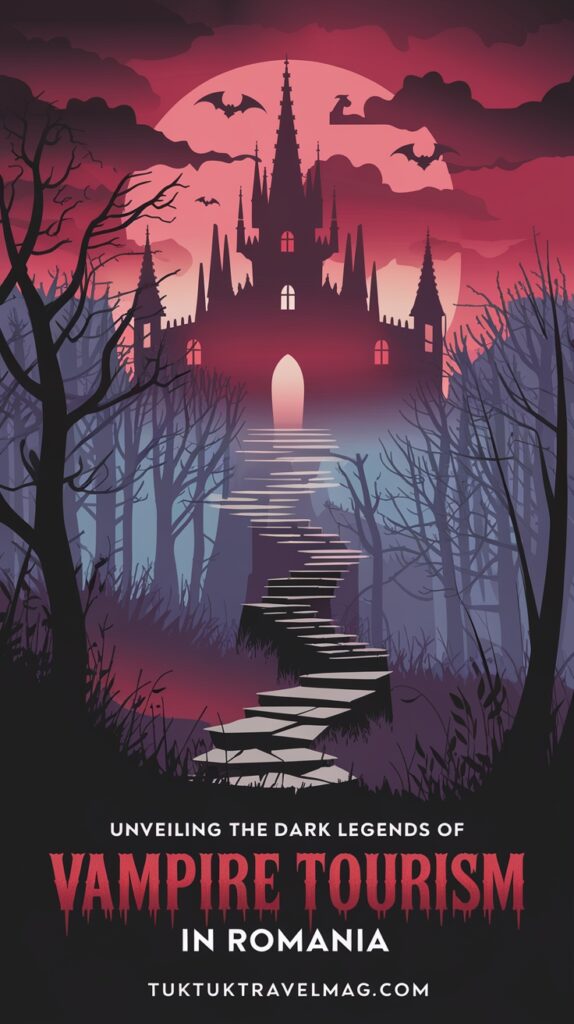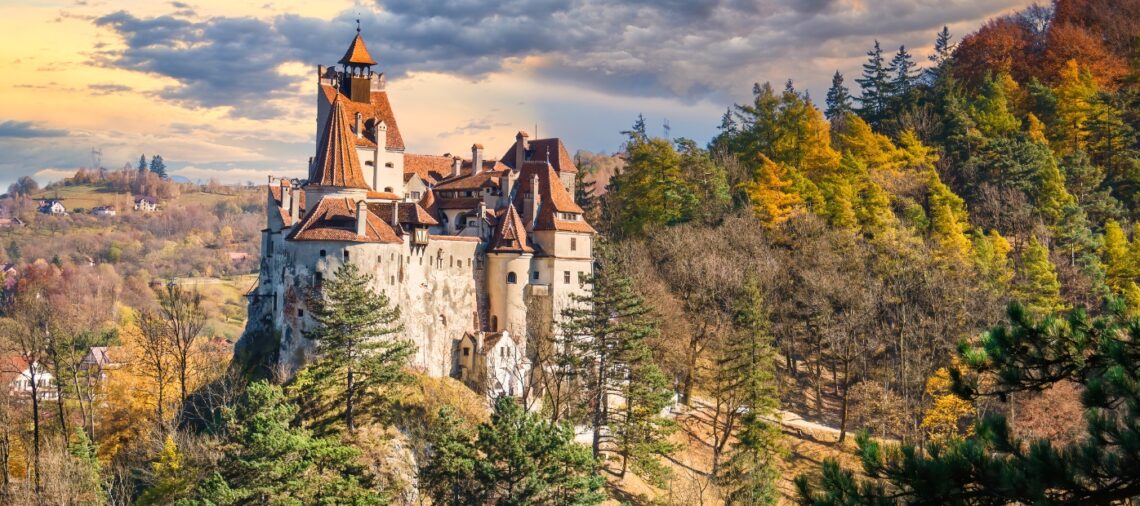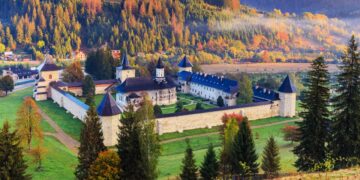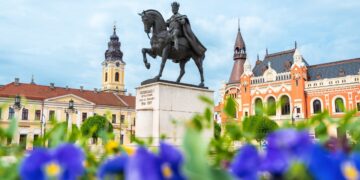Have you ever been intrigued by the mysterious allure of vampires? Well, get ready to embark on a mesmerizing journey as we unveil the dark legends of vampire tourism in Romania. This enchanting country is not only known for its stunning landscapes and rich history, but also for being the haunting ground of one of the most iconic literary figures – Count Dracula. From the eerie Transylvania region to the imposing Bran Castle, join us as we explore the spine-chilling tales and immerse ourselves in the captivating world of vampire tourism in Romania. If you’re a fan of Bram Stoker’s classic novel or simply seeking an unforgettable adventure, this article is sure to pique your curiosity and leave you yearning to witness the vampire legends come to life.
Travel to Romania? Here are the lowest flight fares:
The History of Vampire Legends in Romania
Romania is a country rich in folklore and mythology, and one of the most well-known aspects of its cultural heritage is the vampire legend. For centuries, tales of blood-sucking creatures that rise from the grave have captivated the imaginations of people around the world. These legends have their roots in ancient folklore and have been passed down through generations, becoming deeply ingrained in Romanian culture.
Mythology and Folklore Surrounding Vampires
The origins of vampire myths can be traced back to ancient civilizations such as the Mesopotamians and Egyptians, who believed in supernatural beings that fed on the life essence of the living. In Romanian folklore, the concept of the vampire took on unique characteristics. Vampires were believed to be restless souls who returned from the grave to torment the living. They were known to drain the blood of their victims to sustain their undead existence.
Origins of Vampire Myths
The origins of vampire myths in Romania can be attributed to various sources. One significant influence is the belief in strigoi, which are evil spirits or ghosts that can shape-shift into animals or humans. These spirits were said to be the souls of individuals who died a violent or unnatural death. It was believed that they would seek revenge on the living and cause mischief in the community.
Another factor contributing to the vampire legend is the superstition surrounding death. In Romanian culture, death was surrounded by rituals and practices aimed at protecting the deceased and the living. These rituals often involved the placing of objects or performing specific actions to prevent a deceased person from becoming a vampire.
Different Vampire Legends in Romania

Romania is home to various vampire legends, each with its own unique characteristics. One of the most famous legends is that of Count Dracula, popularized by Bram Stoker’s novel “Dracula.” This fictional vampire, inspired by the real-life ruler Vlad the Impaler, has become synonymous with Romanian vampire lore.
Other vampire legends in Romania include the Strigoi, known for their ability to shape-shift and their affinity for blood. The Moroi are believed to be the souls of unbaptized children who return to the living world to seek revenge. And the Varcolac is a werewolf-like creature that transforms into a vampire during a full moon.
Bram Stoker and Dracula Connection
Bram Stoker’s novel “Dracula” played a significant role in popularizing the vampire legend and associating it with Romania. Although Stoker never visited Romania himself, his meticulous research and use of historical figures such as Vlad the Impaler helped create a compelling and enduring vampire story.
Influence of Bram Stoker’s Novel
Stoker’s novel, published in 1897, introduced readers to the enigmatic Count Dracula and his treacherous castle in Transylvania. The book’s gothic ambiance, suspenseful plot, and terrifying vampire characters quickly captured the public’s imagination. The association of Dracula with Romania and Transylvania firmly established the country as a hub for vampire legends and immortalized the vampire tourism industry.
The Real Vlad the Impaler
While Stoker’s portrayal of Dracula was fictional, it drew inspiration from the historical figure Vlad the Impaler. Vlad III, also known as Vlad the Impaler, was a ruthless ruler in 15th-century Romania. Known for his brutal methods of maintaining order and his penchant for impaling his enemies, Vlad’s reputation became intertwined with the vampire legend.
The Popularity of Vampire Tourism
In recent years, vampire tourism has experienced a surge in popularity. Dark tourism, also known as thanatourism or black tourism, involves visiting places associated with death, tragedy, or dark legends. Romania’s connection to the vampire myth has made it a prime destination for those seeking a morbid and thrilling experience.
Rise of Dark Tourism
Dark tourism has gained traction as travelers seek unique and unconventional experiences. Tourists are drawn to the allure of venturing into the realm of the supernatural and exploring the legends and lore that surround vampires in Romania. The macabre nature of vampire tourism provides a different perspective on history and culture, allowing visitors to engage with the darker aspects of human fascination.
Attractions and Activities for Vampire Tourists in Romania
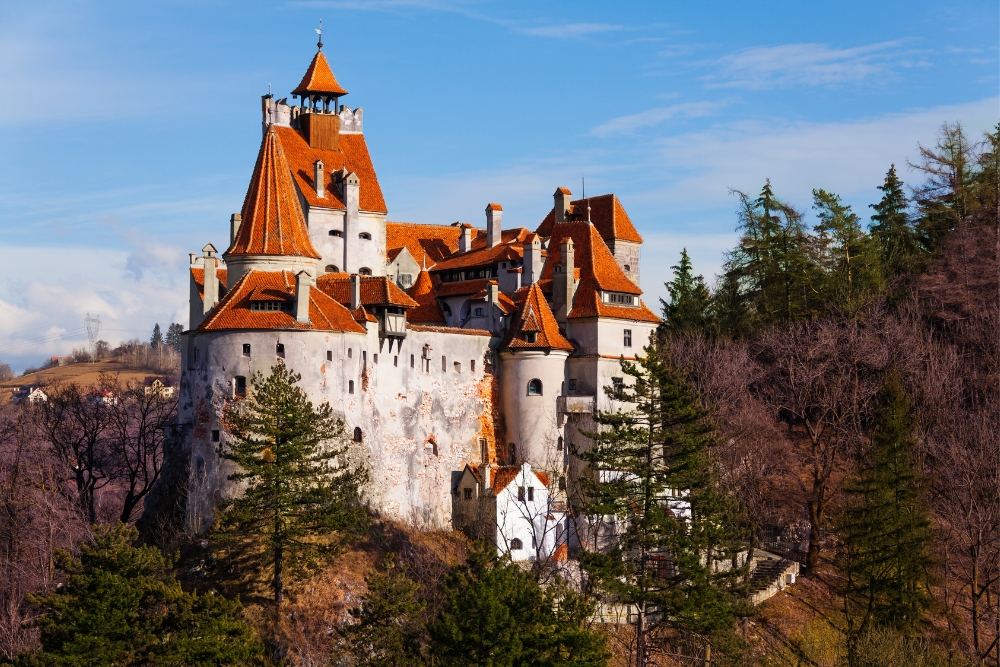
Romania offers a wide range of attractions and activities for vampire tourists. One of the most iconic locations is Bran Castle, often referred to as the Dracula Castle. Perched on a cliff in the heart of Transylvania, the castle’s Gothic architecture and association with the Dracula legend make it a must-visit for vampire enthusiasts.
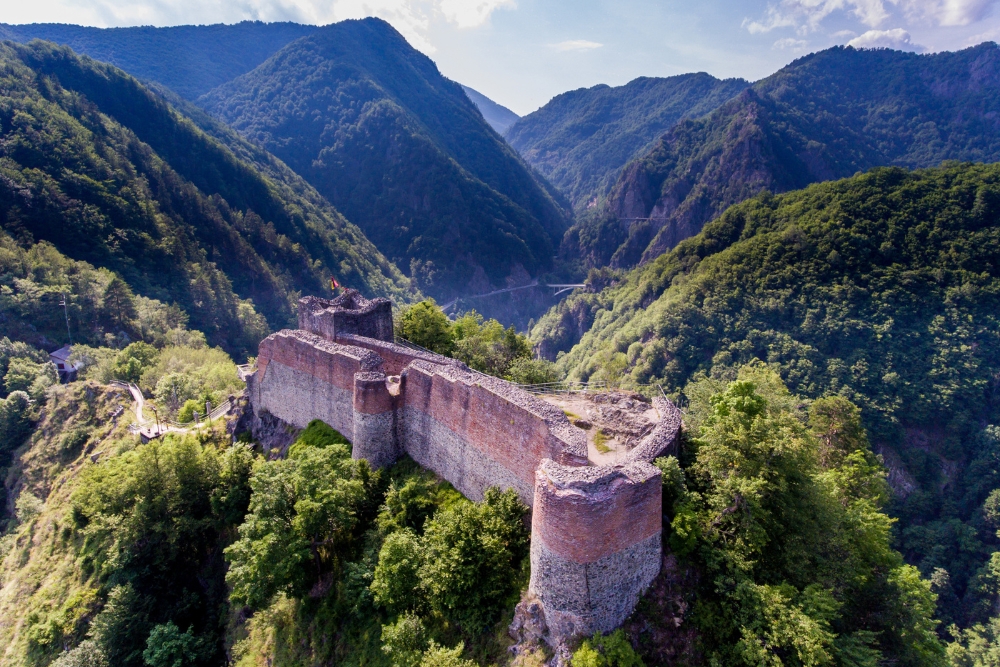
Another significant vampire-related site is the Poienari Fortress, located in the Carpathian Mountains. This fortress was a stronghold of Vlad the Impaler and offers a glimpse into his dark and turbulent reign. Visitors can climb the 1,480 steps to reach the fortress and immerse themselves in the rich history of the region.
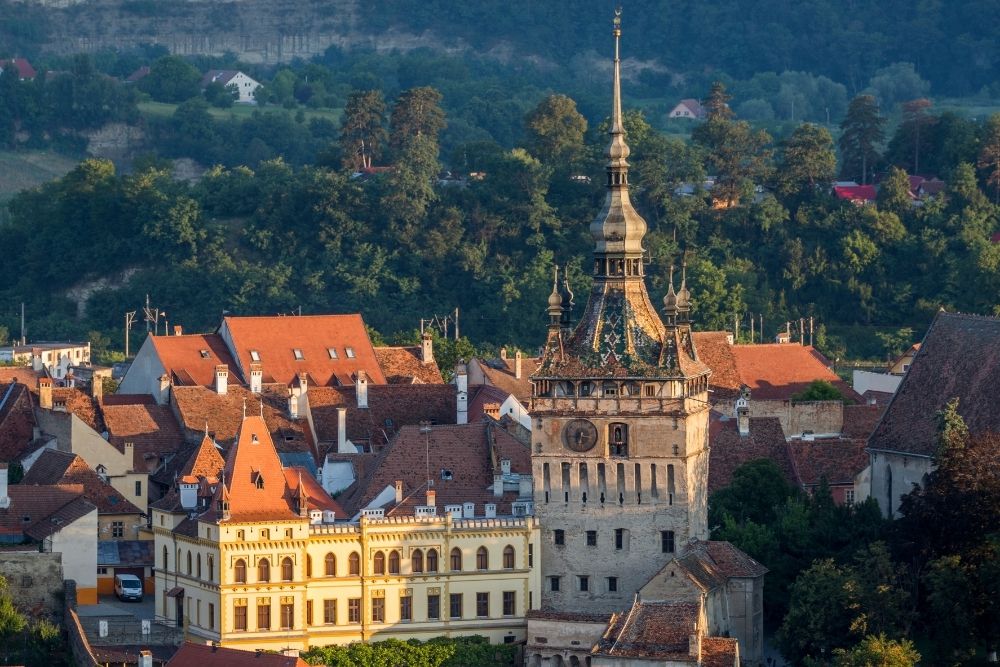
Sighisoara, the birthplace of Vlad the Impaler, also attracts vampire tourists. The medieval citadel, with its well-preserved architecture and cobblestone streets, provides a glimpse into Vlad’s early life and the historical context of the vampire legend.
Villages and People Touched by Vampire Legends
In addition to famous locations, several villages and individuals have been touched by vampire legends in Romania, adding to the intrigue of vampire tourism.
Arefu, known as the Vampire Village, is nestled in the picturesque countryside. This small village has embraced its vampire heritage and offers tours and activities centered around the legend. Visitors can explore vampire-themed museums, dine in vampire-inspired restaurants, and even participate in interactive experiences rooted in local folklore.
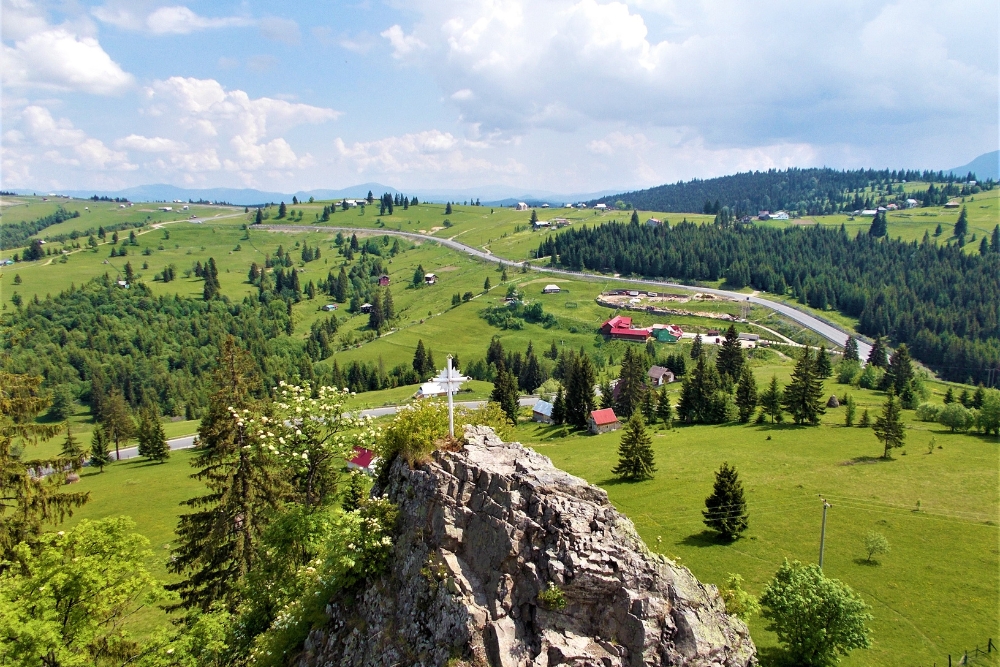
Nestled amidst the picturesque landscapes of Transylvania, the enchanting village of Piatra Fantanele holds a captivating secret that draws travelers from far and wide. Here, where the dense forests of the Carpathian Mountains converge with the legends of old, a remarkable edifice known as the Dracula Hotel stands proudly. This extraordinary establishment is perched upon the very same terrain that inspired Bram Stoker to conjure the hauntingly magnificent Dracula Castle within the pages of his iconic novel, “Dracula.”
Piatra Fantanele, with its Dracula Hotel, has become a destination that beckons both thrill-seekers and admirers of literary history. Visitors from across the globe arrive, yearning to explore the landscape that fueled Stoker’s imagination and immerse themselves in the beguiling realm of Dracula.
Tourist Experiences and Packages
To cater to the growing demand for vampire-themed experiences, tour operators in Romania have developed a range of tour packages and events for vampire tourists.
Vampire-themed tours take visitors on a journey through the heart of vampire lore. These tours often include visits to famous Dracula-related sites, guided walks through historic neighborhoods, and storytelling sessions that bring the legends to life.
For those looking for a more immersive experience, staying in vampire-inspired accommodations is a popular option. Hotels, guesthouses, and castles have embraced the vampire theme, offering guests a chance to sleep in coffins or lavish rooms adorned with vampire-inspired decor.
Controversies and Ethical Considerations
While vampire tourism has brought economic benefits to many areas in Romania, it is not without its controversies and ethical considerations.
Exploitation of Vampire Legends
Some critics argue that the vampire tourism industry exploits the rich cultural heritage of Romania for commercial gain. The commodification of vampire legends can, at times, overshadow the historical and cultural significance of the sites and trivialize the country’s history.
Intrusion of Tourism on Local Communities
The influx of vampire tourists has also raised concerns about the impact on local communities. The growing number of visitors in some areas has put strain on infrastructure and resources. Preservation of historical sites can also become a challenge when faced with the demands of mass tourism.
Boost to Local Economy
Vampire tourism has undoubtedly provided a boost to the local economy. From increased employment opportunities to the development of tourist infrastructure, the industry has created a vibrant economy in regions that were previously struggling. Small businesses, such as souvenir shops and local tour operators, have flourished, supporting the livelihoods of local residents.
Preserving and Promoting Cultural Heritage
Vampire tourism has helped raise awareness and preserve Romania’s cultural heritage. The demand for vampire-related experiences has incentivized the preservation of historical sites, leading to the restoration and maintenance of castles, fortresses, and other important landmarks. This preservation not only benefits tourists but also ensures that future generations can appreciate and connect with their cultural heritage.
Sustainable and Responsible Tourism Practices
To ensure the longevity of vampire tourism in Romania, it is essential to maintain a balance between economic development and preserving the country’s cultural heritage. Implementing sustainable tourism practices that respect local communities and the environment is vital in preserving the authenticity and integrity of the sites.
Challenges and Opportunities Ahead
The future of vampire tourism in Romania faces both challenges and opportunities. Striking a balance between preserving cultural heritage and managing the impact of mass tourism will be crucial. Collaboration between stakeholders, including the government, local communities, and tour operators, is necessary to navigate these challenges successfully.
In conclusion, the history of vampire legends in Romania is a fascinating tapestry of folklore, mythology, and historical figures. The association of Romania with vampires, most notably through Bram Stoker’s “Dracula,” has ignited a thriving vampire tourism industry. While the industry brings economic benefits and promotes cultural heritage, it is essential to approach it with sensitivity and responsibility. Striking a balance between preserving Romania’s rich cultural heritage and managing the impact of tourism will ensure a sustainable and thriving vampire tourism industry for years to come.
Photos: CanvaPro
You may also like: 12 tourist attractions in Bucharest Old Town
